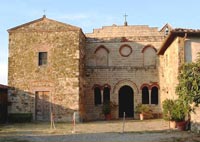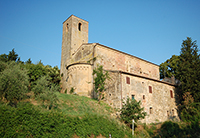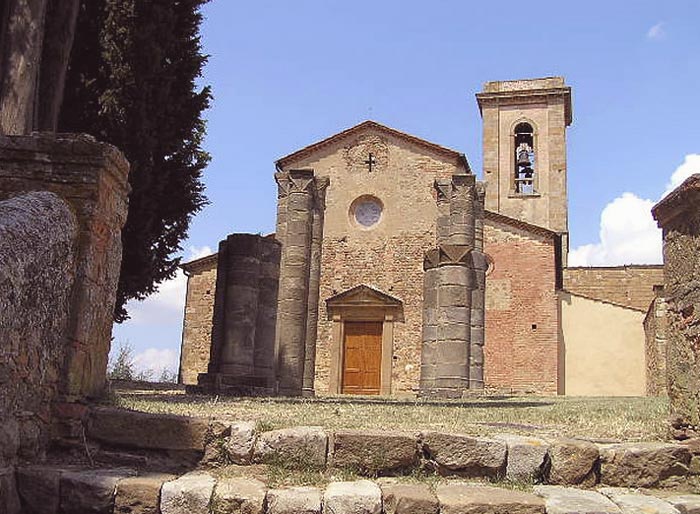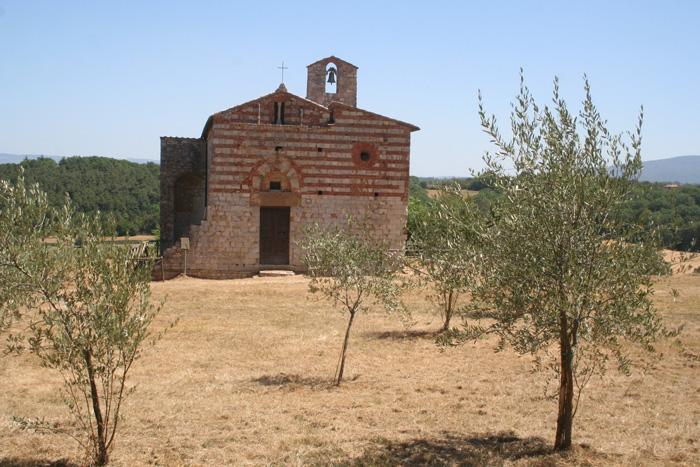 |
Pieve of SS. Ippolito and Cassiano(Conèo)
|
|
The presence of christian communities in this valley dates back to the 5th century, as many country churches, Pievi, were located along the old Roman roads and can be found throughout Tuscany, Umbria and Emilia - Romagna. The term pievi is thought to have come from the Latin plebs, denoting their function among the common people. These crudely built rural churches were built to spread Christianity into the pagan hinterlands of medieval Italy by providing a place where baptisms might be performed. |
 |
||||
| The Pieve dei Santi Vito e Modesto a Corsignano in Pienza | ||||
Pienza was rebuilt from a village called Corsignano, which was the birthplace (1405) of Aeneas Silvius Piccolomini (Italian: Enea Silvio Piccolomini), a Renaissance humanist born into an exiled Sienese family, who later became Pope Pius II. Once he became Pope, Piccolomini had the entire village rebuilt as an ideal Renaissance town. Its origins can be traced to the VII century, while the actual version dates back to the 12th century. Inside is the baptismal font where Pio II and his nephew Pio III were baptized. The scenery of the Val d’Orcia begins with a symmetry of natural harmony with its rolling hills, and then changes into the majestic grandeur of the Amiata. Monticchiello, La Foce and San Quirico d'Orcia are situated within an hour's drive from Podere Santa Pia. The road which leads from Castiglioncello Bandini to Monticchiello and San Quirico, passing first through Castello Porrona, Montalcino and Pienza, is breathtaking. Picture Gallery Pienza and the pieve di Corsignano
|
||||
 |
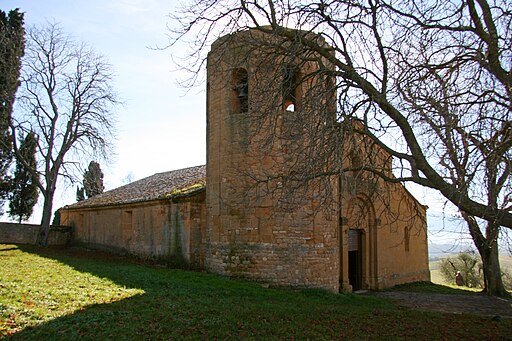 |
 |
||
| Pienza | Pieve dei Santi Vito e Modesto a Corsignano
|
Pieve Corsignano interno
|
||
 |
 |
 |
||
Portale d'ingresso della Pieve dei Santi Vito e Modesto a Corsignano, Pienza
|
Portale laterale | |||
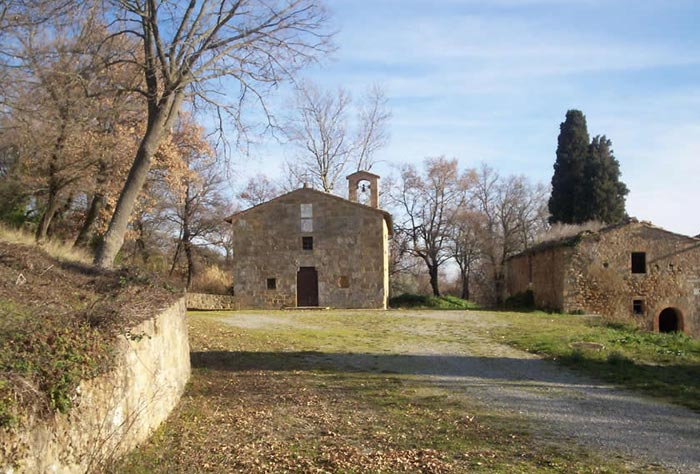 |
||||
| Pieve di Santa Maria dello Spino |
||||
The Pieve di Santa Maria dello Spino, between Monticchiello and Bagno Vignoni, is used on the annual Corpus Domini procession, the Processione del Corpus Domini. |
||||
The Pieve di San Stefano in Cennano |
||||
Castelmuzio includes three churches. The most famous is the Pieve di Santo Stefano in Cennano, just outside the village. This small parish church has a documented history since 715 A.D. Its location was originally an Etruscan place of worship, and much later the church was built over an early Roman temple. The part you see today was built in 1285 A.D.
|
||||
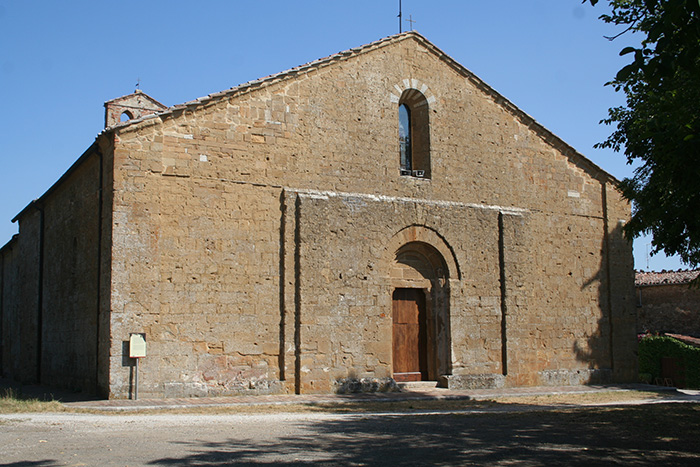 |
||||
Pieve di Santo Stefano a Cennano, façade
|
||||
| The Pieve di San Stefano in Cennano, of paleo-Christian origin, arose around the center of what was a Roman settlement, a vicus. It was situated in an uncivilized area, a part of the greater municipality of Roman Arezzo. It was built on the foundations of a former pagan temple. It is sited along an Etruscan-Roman road leading from Chiusi towards Chianti and Fiesole. The structure already existed in the 4th century, (perhaps consecrated by Saint Donato, second Bishop of Arezzo, who was an evangelizer in this area) as a baptismal church. As part of a group of 19 Pievi, it was the object of a famous dispute between the Bishops of Siena and Arezzo, over the question of to whom they belonged, which went on until 1220. Of the 19 ancient baptismal churches, Cennano and Corsignano are the only ones which have retained any integrity, while the others either no longer exist or have been radically altered. The present structure of the church, which is on the plan of a basilica with Romanesque traces, dates back to 1285, as a Gothic inscription in the arch above the door indicates. On the outside, in the doorway arch, in addition to the previously mentioned inscription, are some very interesting carvings, full of symbolic significance. At the sides are the figures of two human heads. Above those are two birds of prey (eagles), then two fleur-de-lis (French workers participated in the construction of the Pieve), topped by two mammals (sheep and bull), and finally, an eagle with its wings spread. To the side are two Maltese crosses, to symbolize the passage of the Knights Templar. Above the door in the front, is an arched window opening, with characteristic traces of the gothic style. The Pieve di San Stefano is maintained by the Confraternita di San Bernardino. |
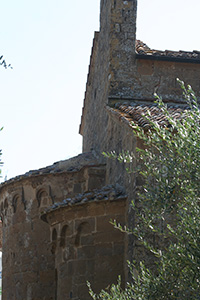 Pieve di Santo Stefano a Cennano, absis |
|||
| Monastero di S.Pellegrino in Passeno in Castelmuzio |
||||
| Monastery of the Pilgrim in Passeno, near Castelmuzio was founded in the 7th century (653-661) by a Longobardian lord named Ursus Ariman, and was located close to an alternate route of the Roman via Francigena. |
|
|||
La Pieve di San Cresci, named after the saint and martyr Acrisius, popularly called Cresci, is situated just outside of Montefioralle, above the bustling town Greve in Chianti, in the province of Florence, in the diocese of Fiesole. The old church is named after one of the greatest evangelists of the Florentine countryside.
|
Pieve di San Cresci at Monteficalle | |||
| The Romanesque Pieve of San Pietro a Cedda is six kilometres from Poggibonsi's centre. It is an abbey-like building with a noteworthy apse and a large bell tower. The complex decoration of the portals and windows is also significant. The interior has a tabernacle attributed to Mino da Fiesole. It once housed also a 14th-century triptych of the Florentine School, now in the town museum of Colle. | ||||
|
||||
 |
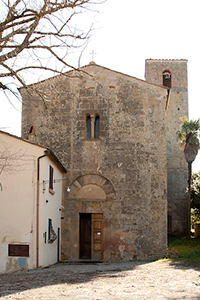 |
|||
| Pieve Santa Restituta, Montalcino | ||||
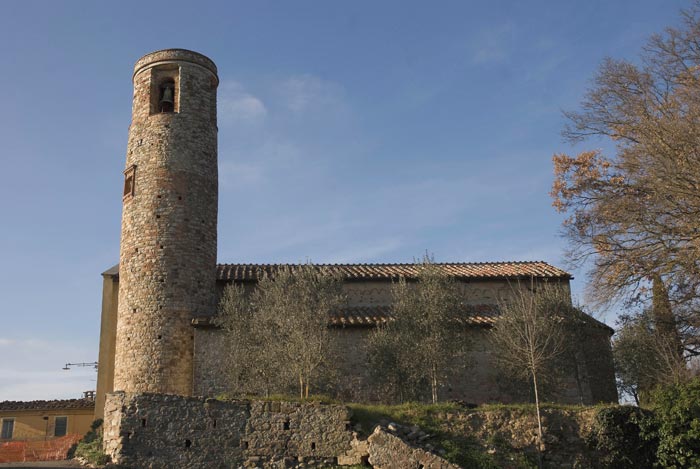 |
||||
Pieve di Santa Maria a Pacina
|
||||
The Parish church of Pacina with its round bell tower can be found just a few kilometres outside Castelnuovo Berardenga on the road that leads to Pianella. |
||||
|
||||
Pieve di Sant'Appiano
|
||||
Pieve di San Giovanni Battista, or Pieve di Ponte allo Spino
|
||||
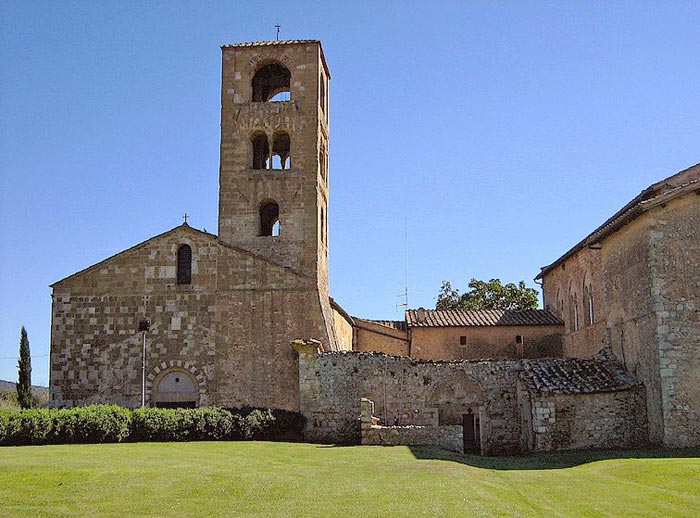 |
||||
Pieve di San Giovanni Battista a Ponte allo Spino, Sovicille, Montagnola Senese
|
||||
 |
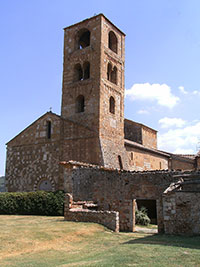 |
 |
||
Sovicille, Pieve di San Giovanni Battista a Ponte allo Spino
|
Sovicille, Pieve di San Giovanni Battista a Ponte allo Spino | Pieve di San Giovanni Battista a Ponte allo Spino, absidi | ||
 |
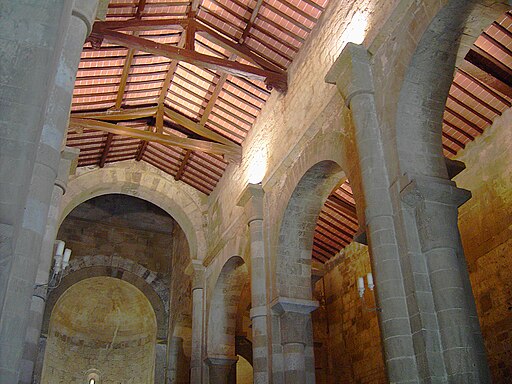 |
 |
||
| Pieve di Ponte allo Spino, resti dell'antico chiostro, colonnetta romana | Pieve di San Giovanni Battista a Ponte allo Spino, interno
|
Pieve di San Giovanni Battista a Ponte allo Spino, interno | ||
|
||||
Map of Romanesque churches in Tuscany and beyond
|
||||
|
||||
 |
 |
 |
||
| Castel del Piano, Chiesa di San Biagio a Gravilona | Pieve dei Santi Stefano e Degna in Castiglione d’Orcia
|
Castel del Piano, Chiesa di Santa Lucia | ||
 |
 |
 |
||
Castiglione d'Orcia
|
L'Ermicciolo, Vivo’Orcia
|
Vivo d'Orcia, Pieve di San Marcello | ||
|
||||

